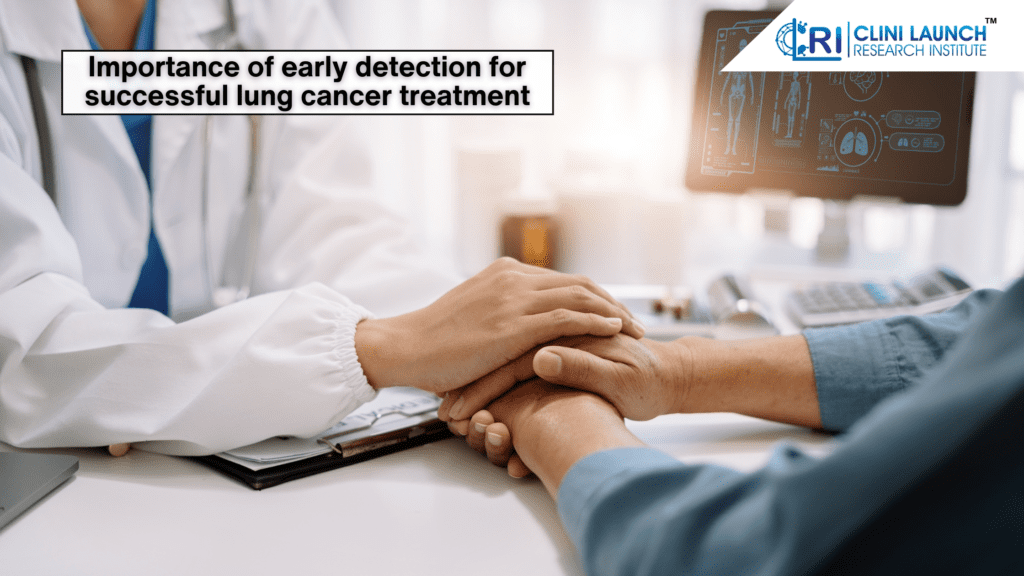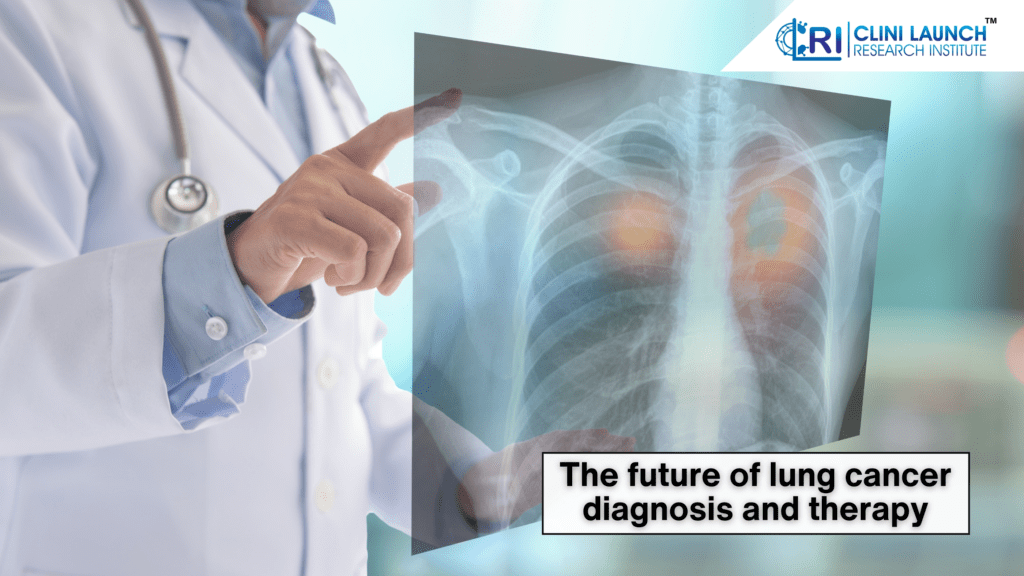Best Clinical Research Institute
Strategic Partnership to Embed Enterprise-grade Skills in Healthcare Education
Lung cancer is a leading cause of health concern, but early detection through lung cancer symptoms can significantly improve treatment outcomes for better patient care. Recognizing the body’s warning signs is crucial.
Lung cancer symptoms – Recognize the warning signs
While smoking is by far the major risk factor, it’s not the only one. Many develop lung cancer without a history of smoking too. While lung cancer symptoms may seem concerning and increasing all around at an alarming rate, this blog empowers one with the knowledge of how to understand and gauge things better. We explore the common warning signs, the importance of early detection for successful treatment, and the promising advancements in lung cancer diagnosis and therapy. By the end, one should be equipped to recognize the signs and take control of your health.
Difficulty recognizing early warning signs
Early lung cancer symptoms can be subtle and may easily be mistaken for other conditions as well. But persistent cough, shortness of breath causing breathlessness, and chest pain are often the most common recognizable signs. However, these symptoms can also be caused by infections, allergies, or even asthma if considered. But if not diagnosed right, it can lead to potentially worse outcomes. This is the reason early detection is essential for exploring various lung cancer therapy options and achieving a positive prognosis.
Knowing the Warning Signs of Lung Cancer
Remember! Lung cancer often whispers warnings before it shouts.
So, moving further let’s delve deeper into the telltale signs the human body might give if lung cancer is present. Recognizing lung cancer symptoms is the first step towards early detection and successful treatment.
- Persistent Cough: A cough that lasts for weeks or even months, especially if it worsens at night or causes coughing up blood (hemoptysis), might be a warning sign.
- Shortness of Breath (Dyspnea): Feeling winded or short of breath during daily tasks might indicate lung diseases, including lung cancer.
- Chest Pain: A chronic aching or intense pain in the chest, especially while taking a big breath, coughing, or laughing, should be treated by a doctor.
- Wheezing: A high-pitched whistling sound when breathing may be produced by restricted airways, which is a potential indication of lung cancer.
- Unexplained Weight Loss: Losing weight accidentally, especially if you haven’t changed your diet or exercise routine, is cause for concern.
- Hoarseness: A persistent change in voice, particularly hoarseness, may indicate lung cancer affecting the vocal cords.
- Fatigue: Constant tiredness or a lack of energy might indicate a variety of illnesses, including lung cancer.
- Recurring Lung Infections: Repeated attacks of pneumonia or bronchitis may indicate underlying lung problems, including cancer.
- Swelling in the Face or Neck: Fluid buildup in the chest owing to blocked lymph nodes can result in edoema in the face and neck.
- Shoulder Pain: Tumors pushing on nearby nerves may be the source of pain at the top of the shoulder.
- Clubbed Fingers: The broadening and rounding of the fingers may be a late-stage indication of lung cancer.
Beyond the common symptoms – Less frequently discussed warning signs of lung cancer

While a persistent cough is a reasonably important warning sign, lung cancer can sometimes present with more subtle symptoms. Let’s explore some lung cancer symptoms that might not be as readily discussed but are still important to be aware of:
- Bone Pain: Lung cancer symptoms may include bone pain, particularly in the back, hips, and ribs. This discomfort develops because malignant tumors can spread to the bones.
- Headaches: Persistent headaches, especially those that increase with coughing or straining, may be an indicator of lung cancer. This might mean the cancer has progressed to the brain.
- Night Sweats: Unexpected sweating for no apparent reason can be a symptom of various cancers, including lung cancer.
- Loss of Appetite: Feeling full or having a diminished desire to eat (loss of appetite) might be a sign of lung cancer, especially when combined with unexplained weight loss.
- Hoarse Voice: A change in voice quality can be a lung cancer symptom, such as hoarseness or raspiness, which may indicate lung cancer. This might be caused by malignancy of the vocal cords.
- Skin Changes: Although rare, lung cancer symptoms may include skin changes on the face, arms, or upper chest, such as redness, edoema, or itching.
Importance of early detection for successful lung cancer treatment

Early detection significantly improves the chances of successful lung cancer treatment. When lung cancer is caught in its early stages, the treatment options are more effective on the body, and the prognosis is much better.
In fact, according to the American Cancer Society, the 5-year survival rate for lung cancer detected at an early stage is 57%, whereas it is only 4% for lung cancer detected in the later stages. Thus, early detection allows for minimally invasive procedures like surgery and radiation therapy, potentially leading to better quality of life for patients undergoing treatment.
The future of lung cancer diagnosis and therapy

The medical field is constantly evolving in today’s times, offering hope for improved lung cancer diagnosis and treatment across the globe. New technologies have been developed such as low-dose CT scans that are becoming increasingly accessible for early detection.
Additionally, research happening in blood tests for lung cancer screening is underway to try and find remedies for this as well. These advancements offer a lot of promise for even more effective diagnosis and the development of innovative lung cancer therapies in the future.
Concluding thoughts
Lung cancer remains a severe health problem, but early identification using lung cancer signs is critical. Smoking is a significant risk factor, but it is not the only one. Recognizing warning signals such as a persistent cough, shortness of breath, and chest discomfort allows you to take control. Early discovery leads to improved treatment choices and a better prognosis. The future seems promising, with advances in diagnosis such as low-dose CT scans and prospective blood testing, as well as breakthrough lung cancer medicines. Be alert and see a doctor if you have any persistent symptoms. Early discovery can save lives.
Early detection is key, and advancements in AI and machine learning in Healthcare offer exciting possibilities for the future of lung cancer diagnosis and treatment. For more details, visit www.clinilaunchresearch.in.

Krishna Talreja
Content Strategist
A dynamic content marketing professional with expertise in brand storytelling and strategic content creation. Adept at managing diverse content projects, driving engagement, and enhancing brand visibility across multiple platforms.
